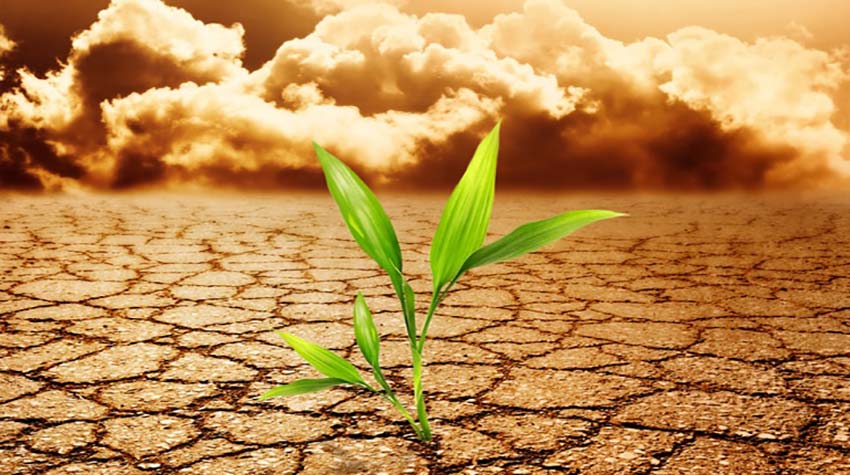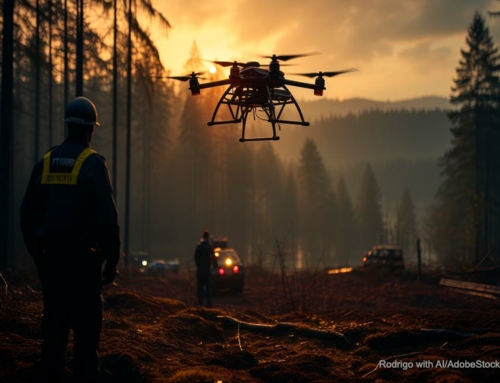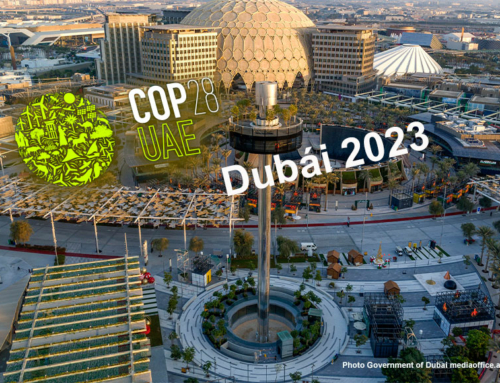There are still those who confuse these two phenomena, which, although very different, are closely related to each other, as they are to the greenhouse effect. We must bear in mind that the three correspond to the natural conditions of our planet for millions of years. Thanks to them, and other characteristics of the Earth, such as its distance to the sun, diameter, gravity and speed of rotation and translation, came together to produce a big bang of life, a real explosion on our planet that gave rise to that immense and exuberant biodiversity, for now incomparable with any other planet.
What is the greenhouse effect?
The natural greenhouse effect is a phenomenon that allows maintaining temperatures in a fairly uniform range on Earth, thanks to the special characteristics of our atmosphere. The solar rays come from space, bounce off the earth’s surface and try to escape back into the cosmos, but a part is retained in the atmospheric layers and consequently the phenomenon of natural global warming occurs. Without greenhouse gases (GHGs), which are present in the atmosphere, such as carbon dioxide (CO2) or water vapor (H2O), the average temperature of the Earth would be around 33 °C less than today’s, an average of 18 °C below zero. It would be an icy planet, probably uninhabited like most of the others in the Solar System or at least not fit for life as we know it.
Natural global warming and global warming by human activity
When we talk about global warming, climate change or greenhouse effect, we refer to current phenomena, anthropogenic source, that is, modifications related to human activities that have been observed since they were increasing industrial expansion and population growth of the Land, since about 200 years ago, more from the 20th century, and especially since 1950. The variations in global warming, the greenhouse effect and climate change are so interlinked that it is impossible to talk about any of them without mentioning the other two.
Evidence of human influence on global warming
The Intergovernmental Panel on Climate Change, referred by Wikipedia, concluded in 2013 that it is extremely likely that human influence has been the dominant cause of warming observed since the mid-20th century. “The greatest human influence has been the emission of greenhouse gases such as carbon dioxide, methane and nitrogen oxide. These conclusions have been supported by the national academies of science of the main industrialized countries and are not questioned by any scientific organization of national or international prestige.”
GHG emissions and the increase in temperature on Earth
The current global warming refers to the increase in temperature on Earth that has been observed in recent centuries. Since then, the use of coal, gasoline, diesel and natural gas has increased as fuels to move factories, railroads, motor vehicles and other transport systems, as well as to cook and generate heat. With the addition of GHG to the atmosphere, unnaturally, the progressive increase in global temperature began. As a result, a smaller number of solar rays escapes the cosmos, leaving the difference trapped in the Earth. This process, which appears to be slow from human chronometry, is almost instantaneous from the scale of geological times and can bring serious changes in the weather patterns on the planet.
Main greenhouse gases
The composition of the Earth’s atmosphere is 78% nitrogen and 21% oxygen. Only the remaining 1% is composed of other gases, including GHGs, of which the main ones are water vapor, CO2, nitrous oxide (N2O), methane (CH4) and ozone (O3).
CO2 represents only 0.04% of the total gases in the atmosphere, but with such a small amount has been responsible for maintaining life on Earth. It is the main greenhouse gas whose concentration recently broke a record by passing the threshold of 400 PPM, parts per million, for the first time since Homo sapiens appeared on Earth. Its participation in the atmosphere, although it seems very low, can modify the climate, causing an extra warming of Earth. CO2 is characterized by its strong fixation in the atmosphere and may take more than a thousand years to be eliminated.
Water vapor is a vital constituent of the atmosphere, on average it participates with 0.97% of the total. It appears in the form of clouds and its volume can present significant variations in short periods, since, unlike CO2, it can precipitate in the form of rain at any time. The evaporation-precipitation effect is vital for almost all species on Earth.
Nitrous oxide is a powerful greenhouse gas. Its emissions, along with carbon dioxide, methane and some aerosols, contribute to global warming.
Methane is a relatively powerful gas that participates in the global warming of the planet, since it has a global warming potential 23 times greater than CO2, although its concentration in the atmosphere is 220 times lower, and therefore its contribution is also lower. to the greenhouse effect.
What is the consequence of global warming?
It is a complex phenomenon named climate change, which is revealed with the increase of heat intensity, producing increases in drought, vegetation fires, melting of poles and glaciers, floods, hurricanes, tornadoes, deterioration of the coral reef, shortage of drinking water, food, etc. It is estimated that most of the increase in GHG comes from the burning of fossil fuels, but there are other factors such as the burning and clearing of forests or the livestock industry. For all these reasons, the subject of climate change is complex, varied and extensive, which is why it justifies being addressed more thoroughly in a future article.
The role of forests
Trees produce oxygen, necessary for most living things, and in turn absorb CO2 or carbon dioxide. During photosynthesis, the process carried out by trees and most plants, they absorb and store CO2, which is fixed in its roots, trunks and leaves in the form of carbon. Although plants take oxygen from the air and re-enter carbon dioxide, the final balance is favorable to the extraction of CO2 from the atmosphere. This advantage is lost by deforesting forests and rainforests, such as the Borneo rainforest, which has been depleted by 70% in three decades, or the Amazon rainforest that seems to walk the same way. Therefore, the felling and burning of trees increases global warming.
Methane gas and the expansion of livestock
An FAO report on livestock establishes that this activity contributes with 18% of the GHG emissions measured in CO2 equivalents. In addition, it is responsible for 9% of direct CO2 emissions, mainly from deforestation, 37% of methane emissions, mainly from animal droppings and 65% from nitrous oxide, from manure.
For the first time 400 PPM
“The record of CO2 emissions marks the beginning of a new era of climate change” was the headline of BBC Mundo, on 10-24-2016. PPM is the abbreviation of parts per million and refers to the concentration of CO2 in the atmosphere. Since humans appeared on Earth, the planet has entered the 400-ppm era for the first time. This means greater global warming and a climate change increasingly difficult to reverse. It will take millennia to lower that concentration.
Forecasts for the future
According to the Intergovernmental Panel on Climate Change, projections of climate models indicate that during this century the global surface temperature will probably rise between 0.3 and 1.7 °C for its best scenario, using strict mitigation, and between 2,6 and 4.8 °C for the worse scenario, in case the requirements of the Paris Agreement are not met. An increase close to 5 °C would produce catastrophic changes on Earth.
A clash of constellations in sight
There is a glimpse of a conflict of great proportions between supporters of fossil fuels and those who fight against climate change, as we noted in our article on fracking. A galactic collision between two sides. On the one hand are those interested in the exploitation of fossil fuels, the promoters of fracking and its products such as shale gas and shale oil, the exploitation of new oil fields and natural gas, those that deforest forests for timber, agricultural purposes or farmers. On the other side are those who bet on clean energy such as lithium batteries and electric cars, green cities, solar energy, wind energy.
The 10 largest emitters of GHG
The most industrialized countries logically are the biggest polluters, in this order: China 28.21%, United States 15.99%, India 6.24%, Russia 4.53%, Japan 3.67%, Germany 2.23%, South Korea 1.75%, Iran 1.72%, Canada 1.71%, Saudi Arabia 1.56%
The Paris Agreement, a manual to overcome climate change
The Paris Agreement is an ambitious global agreement to fight against climate change, negotiated during COP21, Paris 2015. The central objective of the document is to limit the increase in global temperature to 2 °C by reducing GHG emissions, caused by fossil fuels such as oil, gas and coal, which when burned release CO2 into the atmosphere. Through the premise “Zero fossil fuels”, it is intended to replace these with renewable, alternative or clean energy. It also includes recommendations to achieve sustainable development. The Green Climate Fund has been established to help developing countries meet their goals in the fight against climate change. The Paris Agreement places special emphasis on increasing mitigation, adaptation and resilience capacity to reduce vulnerability to climate change.
Mitigation. It means attenuating or softening a negative thing, such as an illness or a headache. In the case of global warming, mitigation refers to the reduction of GHG emissions. They also include the improvement of the sumps to increase the absorption capacity of said gases. Also considered are programs such as carbon or energy taxes, and incentives for voluntary GHG reduction and its replacement by clean energy.
Adaptation. It refers to the actions that must be performed to prevent changes that can produce undesired effects. In the case of global warming, adaptation includes initiatives and measures to reduce the vulnerability of natural and human systems to climate change. Countries and communities must implement preventive measures and practices to avoid probable harm. Short and long-term measures must be contemplated, through environmental management, planning and disaster management.
Resilience It is the ability of a species or a system to recover from a disturbing agent. In terms of climate change, resilience refers to the capacity of an ecosystem to absorb disturbances without significantly altering its structural and functional characteristics and can return to its original state after the adverse factor has ceased.
When and who discovered global warming and climate change?
In 1896, Svante Arrhenius, a Swedish scientist, was the first to proclaim that fossil fuels could accelerate the warming of the Earth. Arrhenius was ahead of his time, along with Thomas Chamberlin, calculated that human activities could cause the temperature increase by adding CO2 to the atmosphere, establishing a relationship between atmospheric carbon dioxide concentrations and temperature. In 1940, using measurements of long-wave radiation, using infrared spectroscopy, it was found that the increase of carbon dioxide in the atmosphere causes a greater absorption of infrared radiation. In 1955, Gilbert Plass observed that CO2 prevents that radiation from escaping into space, causing overheating of the earth.
When did you start talking about climate change?
In 1957, The Hammond Times, mentioned the terms “global warming” and “climatic changes”, based on the research of Roger Revelle, outstanding American scientist and academic, on human intervention in the natural greenhouse effect by increasing CO2 and He warned about the effects of its use on a large scale. However, his warnings fell into forgetfulness until 1975, when Wallace Smith Broecker published a scientific article: “Climate change: are we on the verge of pronounced global warming?” Since then the denomination has started to be used more and more frequently. In 1976, the declaration of Mikhail Budyko “has begun a global warming” had great diffusion. In 1979, the National Academy of Sciences of the United States, headed by Jule Charney, described the effects of CO2 in a broader way, attributing its use to the increase in climate change. In 1988 the NASA climatologist James Hansen, testified before the United States Senate: “Global warming has reached such a level that we can attribute with a high degree of confidence a cause and effect relationship between the greenhouse effect and warming observed”. From then on, the term global warming became popular in the press and in the colloquial language.
To conclude, returning to what was said at the beginning, about the greenhouse effect, global warming and climate change and other characteristics of the Earth, such as its distance from the sun, diameter, gravity and speed of rotation and translation, converged to produce a big bang of life, an authentic vital explosion on our planet that gave rise to this immense and exuberant biodiversity, for now incomparable with any other planet. This privileged conjunction of advantages of our planet we must raise awareness every day, thank and care for it. If we do not do it. If we not do it, most of the species can be extinct. We must be aware with 2020, a key year in which the Paris Agreement will be activated, which will require the commitment of the 197 signatory countries. It will be then that it will be seen who is who and will begin to define the scenario that will have to face in the 21st century.
Sandor Alejandro Gerendas-Kiss
Sources:
Ecologistas en acción. Cambio climático. Qué es el cambio climático. Retrieved from https://www.ecologistasenaccion.org
BBC Mundo. Cambio climático. Retrieved from http://www.bbc.com/mundo/temas/cambio_climatico
Wikipedia. Calentamiento global. Retrieved from https://es.wikipedia.org/wiki/Calentamiento_global
BBC Mundo. El récord de emisiones de CO2 que marca el inicio de una “nueva era” de cambio climático.
Retrieved from http://www.bbc.com/mundo/noticias-37753915
Cambio climático global. Agua y vapor. Retrieved from http://cambioclimaticoglobal.com/agua
Wikipedia. Global warming. Retrieved from https://en.wikipedia.org/wiki/Global_warming
USA Today. Global warming roars on: Past four years have been Earth’s hottest on record. Retrieved from https://www.usatoday.com/story/weather/2018/01/18/2017-global-temperatures-noaa-nasa-el-nino/1043927001/
National Aeronautics and Space Administration. Water Vapor Confirmed as Major Player in Climate Change. Retrieved from https://www.nasa.gov/topics/earth/features/vapor_warming.html







Leave A Comment